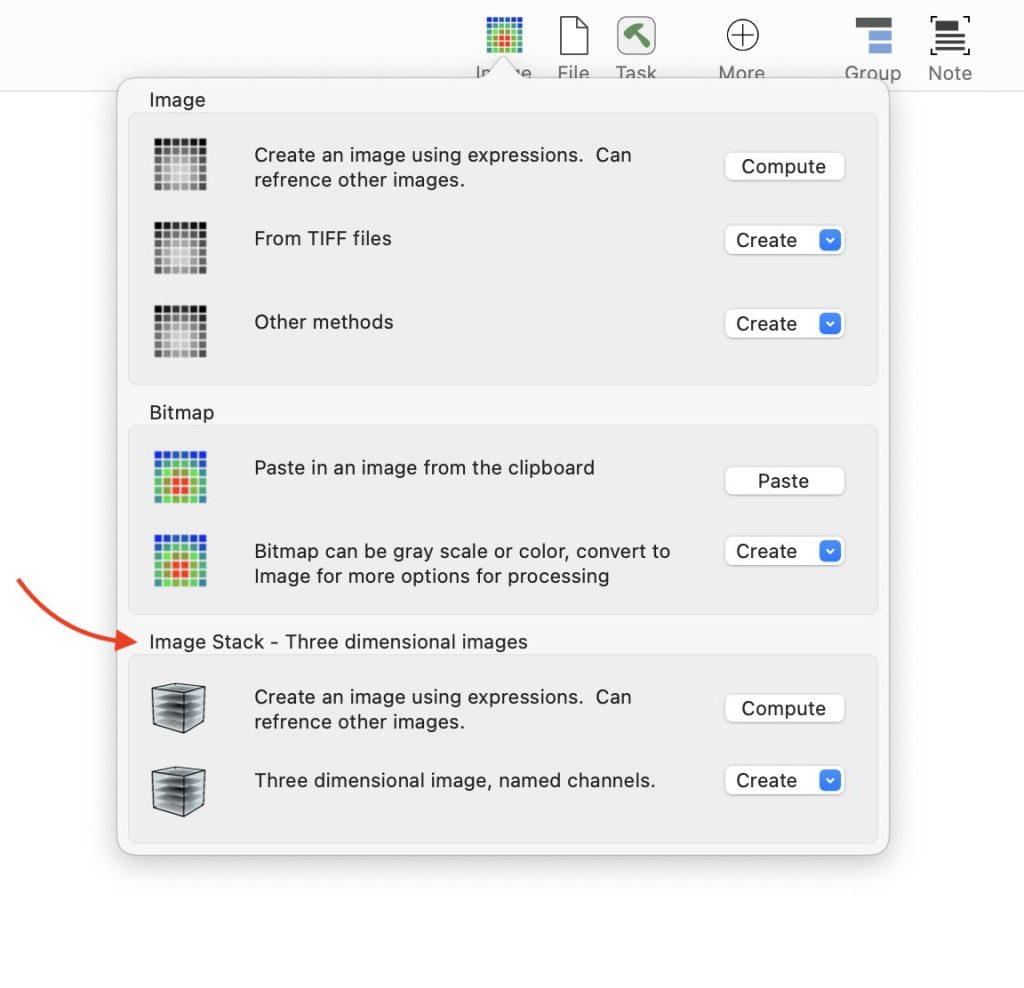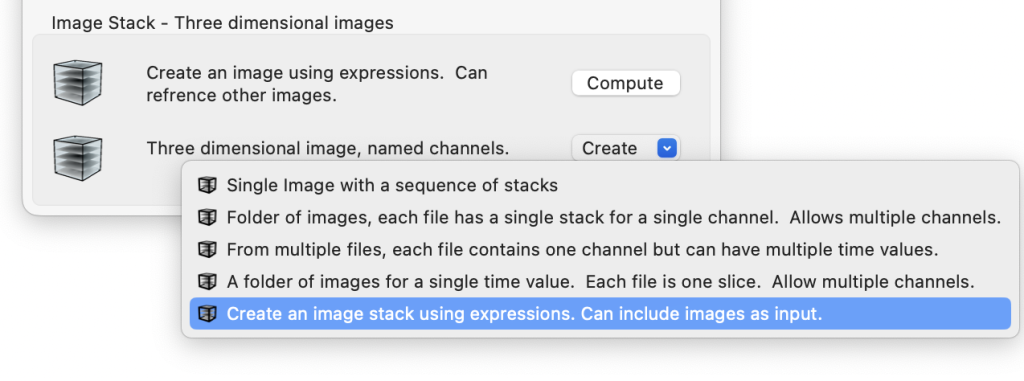Image Stack
This is a three-dimensional version of the Image variable. At the rawest level, this type is a list of channels, where every channel has a name and a three-dimensional array of numbers. The numbers are 8-bit integers, 16-bit integers, or floating-point numbers. The channels can have different number formats, but they all have the same size.
The variable has a grid location that specifies the origin and the step size in the x,y, and z directions. The step sizes don’t have to be the same, and the origin does not have to be (0,0,0). For example, when you crop an Image Stack or 3D Image, the origin will be set so that the region in space is unchanged for the cropped region.
The main ways to create an image stack are accessible from the toolbar. These are all focused on reading images from a tiff file. It is easy to create your own importer from other formats.

Click the Create button for a list of options.

- Single Image: One tiff file with multiple images. If you exported this from ImageJ the layout can be inferred from the file but you still have to specify the channel namess since they are not included.
- Folder of images: Each file has multiple slices but only one channel and one-time value. You use file matching rules to focus on a sub-set of the files in the folder and slice that sub-set into channels. Inside each list of channels, the files are sorted to form a time sequence.
- Multiple files: This is similar to the previous, except in this case, the time values are combined in a single file instead of one file per time value.